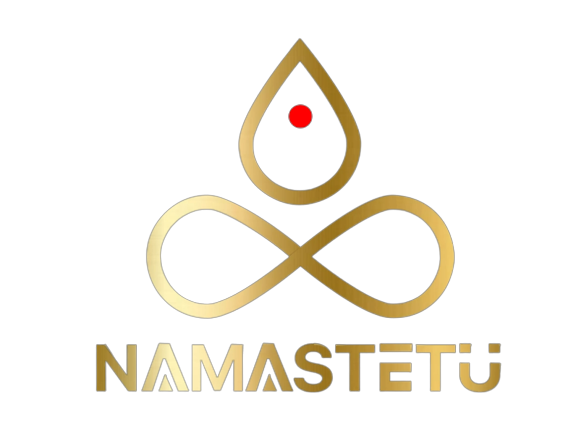In the ever-evolving world of digital marketing, Pay-Per-Click (PPC) advertising has emerged as a powerful tool for businesses to reach their target audience effectively. While PPC is often associated with search engine advertising, it encompasses a much broader range of strategies and platforms. This comprehensive guide will explore the various types of PPC advertising, their benefits, and how they can be integrated with Search Engine Optimization (SEO) for maximum impact.
Before we dive into the types of PPC, it’s essential to understand that a well-rounded digital marketing strategy often combines PPC with SEO marketing. While PPC provides immediate visibility, SEO builds long-term organic presence. Let’s explore how these two strategies work together and the different types of PPC available to marketers today.
Search Engine Advertising: The Foundation of PPC
The most well-known form of PPC is search engine advertising, primarily dominated by Google Ads (formerly Google AdWords). This type of PPC allows advertisers to bid on keywords relevant to their business and appear at the top of search engine results pages (SERPs).
Key aspects of search engine PPC:
- Keyword Research is crucial for identifying the most effective search terms
- Ads appear alongside organic search results, complementing SEO strategies
- Highly targeted, as ads are shown to users actively searching for related products or services
For businesses working with an SEO agency or SEO company, integrating PPC with organic search strategies can provide a powerful one-two punch in search visibility.
Display Advertising: Visual PPC Across the Web
Display advertising involves placing visual ads on websites within an advertising network. Google’s Display Network is a prime example, allowing advertisers to reach users across millions of websites.
Important considerations for display PPC:
- Visual creativity is key to capturing attention
- Can be used for both brand awareness and direct response campaigns
- Often complements content marketing efforts by retargeting website visitors
Social Media Advertising: Engaging Users Where They Spend Time
Social media platforms like Facebook, Instagram, LinkedIn, and Twitter offer robust PPC options. These platforms provide highly detailed targeting options based on user demographics, interests, and behaviors.
Benefits of social media PPC:
- Excellent for brand awareness and community building
- Can drive traffic to your website, supporting SEO efforts
- Allows for creative ad formats, including video and interactive content
Shopping Ads: Driving E-commerce Success
For e-commerce businesses, shopping ads are a crucial type of PPC. These ads display product images, prices, and store information directly in search results or on shopping comparison sites.
How shopping ads complement SEO:
- They can appear alongside organic product listings, increasing visibility
- Support local SEO efforts by displaying local inventory information
- Provide valuable data on product performance, informing SEO strategies
Remarketing: Bringing Back Interested Customers
Remarketing (or retargeting) allows advertisers to show ads to users who have previously interacted with their website or app. This type of PPC is highly effective for converting interested prospects into customers.
Remarketing and SEO:
- Can be used to promote content to users who’ve engaged with your site, supporting content marketing efforts
- Helps reinforce brand awareness, which can indirectly boost organic search performance
- Can be tailored based on specific pages visited, aligning with SEO landing page strategies
Video Advertising: Engaging Audiences with Rich Media
Video advertising, primarily through platforms like YouTube, allows businesses to reach users with engaging video content. This format is excellent for product demonstrations, brand storytelling, and educational content.
Integrating video PPC with SEO:
- Video content can be optimized for search, supporting overall SEO efforts
- Can drive traffic to your website, potentially improving organic search signals
- Supports content marketing strategies by providing another channel for content distribution
Native Advertising: Blending In with Content
Native advertising is a form of PPC where ads match the look, feel, and function of the media format in which they appear. These ads are often found on social media platforms and content recommendation networks.
Native advertising and SEO:
- Can be used to distribute high-quality content, supporting content marketing initiatives
- Drives traffic to your website, potentially improving organic search signals
- Helps build brand authority, which can indirectly benefit SEO
App Install Ads: Boosting Mobile App Downloads
For businesses with mobile apps, app install ads are a specific type of PPC designed to increase app downloads. These ads can appear in search results, on social media platforms, or within other apps.
App install ads and mobile SEO:
- Support mobile SEO efforts by increasing app visibility and downloads
- Can improve app store optimization (ASO) performance
- Drive user engagement, which can indirectly benefit overall digital presence
Gmail Sponsored Promotions: Reaching Users in Their Inbox
Gmail Sponsored Promotions (GSP) are a unique form of PPC that allows advertisers to display ads in the Gmail inbox. These ads appear as emails and can be expanded to reveal more content.
GSP and SEO:
- Can be used to promote content, supporting content marketing strategies
- Drives traffic to your website, potentially improving organic search signals
- Allows for highly targeted messaging based on email content, complementing SEO efforts
Amazon Advertising: Targeting E-commerce Shoppers
For businesses selling products on Amazon, Amazon Advertising provides a variety of PPC options to increase product visibility within the platform.
Amazon Advertising and SEO:
- Complements Amazon SEO efforts by increasing product visibility
- Can improve organic rankings through increased sales and reviews
- Provides valuable data on keyword performance, informing overall SEO strategies
Integrating PPC with SEO: A Holistic Approach
While PPC and SEO are often viewed as separate strategies, they can work together synergistically to improve overall digital marketing performance. Here’s how:
- Keyword Research: PPC campaigns provide valuable data on keyword performance, which can inform SEO strategies. SEO specialists can use this information to optimize content and meta tags.
- Landing Page Optimization: Creating high-quality landing pages for PPC campaigns also benefits SEO, as these pages can rank organically if optimized correctly.
- Content Marketing: PPC can be used to promote content created for SEO purposes, increasing its reach and potential for backlink building.
- Local SEO: Local PPC campaigns can complement local SEO efforts, increasing visibility for location-specific searches.
- Brand Awareness: PPC campaigns can increase brand recognition, potentially leading to more branded searches and improved organic click-through rates.
- Testing and Optimization: PPC allows for quick testing of headlines, ad copy, and landing pages. These insights can be applied to SEO efforts for better performance.
Tools for PPC and SEO
Several tools can help manage both PPC and SEO efforts:
- SEMrush: Offers comprehensive keyword research, competitor analysis, and PPC planning tools.
- Google Analytics: Essential for tracking both paid and organic traffic.
- Google Search Console: Provides valuable insights into organic search performance.
- Ahrefs: Useful for backlink analysis and keyword research.
- Moz: Offers a suite of SEO tools including rank tracking and site audits.
Best Practices for PPC and SEO
- Align PPC and SEO keywords: Ensure consistency between your paid and organic keyword strategies.
- Optimize landing pages: Create high-quality pages that serve both PPC and SEO purposes.
- Use negative keywords: Prevent your ads from showing for irrelevant searches, improving ad relevance and supporting SEO efforts.
- Leverage ad extensions: Use all relevant ad extensions to improve ad visibility and provide more information to users.
- Monitor cannibalization: Ensure your PPC efforts aren’t competing with your organic rankings for the same keywords.
- Implement proper tracking: Use UTM parameters and conversion tracking to accurately measure the performance of both PPC and SEO.
The Future of PPC and SEO
As search engines and digital platforms evolve, so too will PPC and SEO. Some trends to watch include:
- Voice search optimization for both paid and organic results
- Increased use of artificial intelligence in ad targeting and SEO
- Greater emphasis on user intent and contextual relevance
- Integration of augmented reality (AR) in advertising
- Continued focus on privacy and data protection in digital advertising
Conclusion
Understanding the various types of PPC advertising and how they integrate with SEO is crucial for developing a comprehensive digital marketing strategy. By leveraging the strengths of both PPC and SEO, businesses can maximize their online visibility, drive targeted traffic, and achieve their marketing goals more effectively.
Ready to take your digital marketing to the next level? At Namastetu India, we specialize in creating integrated PPC and SEO strategies that drive results. Our team of experienced SEO specialists and PPC experts can help you navigate the complex world of digital advertising and search engine optimization. Whether you’re looking to improve your Google SEO, boost your local SEO, or launch a comprehensive PPC campaign, we have the expertise to help you succeed. Don’t let your competitors outrank you – contact Namastetu India today for a free consultation and discover how we can elevate your online presence. Let’s work together to unlock your business’s full potential in the digital landscape!
FAQs About How Many Types of PPC Are There
How long does it take to see results from PPC compared to SEO?
PPC can deliver immediate results, while SEO typically takes 3-6 months to show significant improvements.
Can I do PPC without investing in SEO?
While possible, it’s not recommended. A balanced approach using both PPC and SEO often yields the best results.
How much should I budget for PPC advertising?
Budget varies depending on industry and competition. Start small, test, and scale based on performance.
Does running PPC ads improve my SEO rankings?
Not directly, but PPC can indirectly benefit SEO through increased brand awareness and website traffic.
How often should I update my PPC and SEO strategies?
Regularly review and update both strategies, ideally monthly, to adapt to market changes and algorithm updates.




